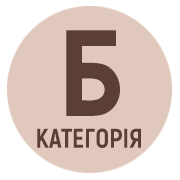THE INFLUENCE OF JOSEPH KESSLER ON THE FORMATION OF CULTURAL AND ARTISTIC TRADITIONS IN LVIV IN THE FIRST HALF OF THE 19TH CENTURY
DOI:
https://doi.org/10.32782/2224-0926-2024-3-4-50-51-17Keywords:
Joseph Kessler, piano composition, piano performance, piano pedagogy, Galician Music Society.Abstract
This article is dedicated to the review of the creative activities of the German composer, pianist, and educator Joseph Kessler, who spent twenty years in the capital of Eastern Galicia–Lviv– contributing to the development of the city’s cultural and artistic heritage and leaving a mark on the musical life and piano pedagogy. As an active figure and honorary member of the Galician Music Society, he frequently performed at concerts organized by the society and repeatedly involved his best students. Some of his piano works were composed while he was in Lviv, including Etudes-Rhapsodies Op. 51, Rondo-Gracioso Op. 56, as well as Mazurkas, Waltzes, and other piano miniatures. The article briefly mentions his creative contacts with other renowned musicians, allowing for the tracing of the interactions between leading European schools that shaped Kessler’s individual writing style. It is important to emphasize that this process was not one-sided, as his artistic dialogues with individual musicians contributed not only to the assimilation of characteristic features of various writing styles but also to Kessler’s direct influence on the creativity of others, leading to the integration of new elements into each artist’s compositional techniques. This interaction expanded the possibilities of their musical language and created conditions for the development of a new synthetic approach that combined the individual aesthetic priorities of both composers while enriching the musical culture of the era. Furthermore, the article establishes the influence of Kessler on the development of the musical culture of Galicia, contributing to the formation of specific performing and pedagogical principles that subsequently became an integral part of the overall development of piano art in the region.
References
Галицьке музичне товариство. Вікіпедія. URL: https://uk.wikipedia.org/wiki/Галицьке_музичне_товариство (дата звернення: 01.09.2024).
Дітчук О. Роль віденської фортепіанної школи у формуванні піаністичного мистецтва України (Галичина та українська діаспора п.п. ХХ століття. Львів, 2009. С. 21.
Кашкадамова Н. Історія фортепіанного мистецтва ХІХ ст. Тернопіль, 2006. С. 251.
Мазепа Т.Л. Соціокультурний феномен європейський музичних товариств ХІХ – початку ХХ століття на прикладі Галицького музичного товариства. Львів, 2017. С. 392.
Моцарт-син. Життя Франца Ксавера у подорожньому щоденнику і листах. / упор. О. Линів. Львів : Видавництво Старого Лева, 2023. 568 с.
Токарчук В. Австрійські композитори Львова першої пол. 19 ст. Записки НТШ: праці Музикознавчої комісії. Львів : ВЦ НТШ, 1996. С. 228.
Gesammelte Schriften über Musik und Musiker. Compositionen von J. C. Keßler. https://de.wikisource.org/wiki/Gesammelte_Schriften_%C3%BCber_Musik_und_Musiker/Compositionen_von_J._C._Ke%C3%9Fler (дата звернення: 08.09.2024).
Johann Nepomuk Hummel. Interlude. URL: https://interlude.hk/johann-nepomuk-hummel/ (дата звернення: 15.09.2024).
Pyllemann F. Mittheilungen über J.C. Kessler. Allgemeine musikalische Zeitung. 1872. Т. 7. № 12. S. 185–190. URL: https://de.m.wikipedia.org/wiki/Allgemeine_musikalische_Zeitung.
Wikipedia. Joseph Christoph Kessler (Йозеф Крістоф Кесслер). URL: https://en.wikipedia.org/wiki/Joseph_Christoph_Kessler







